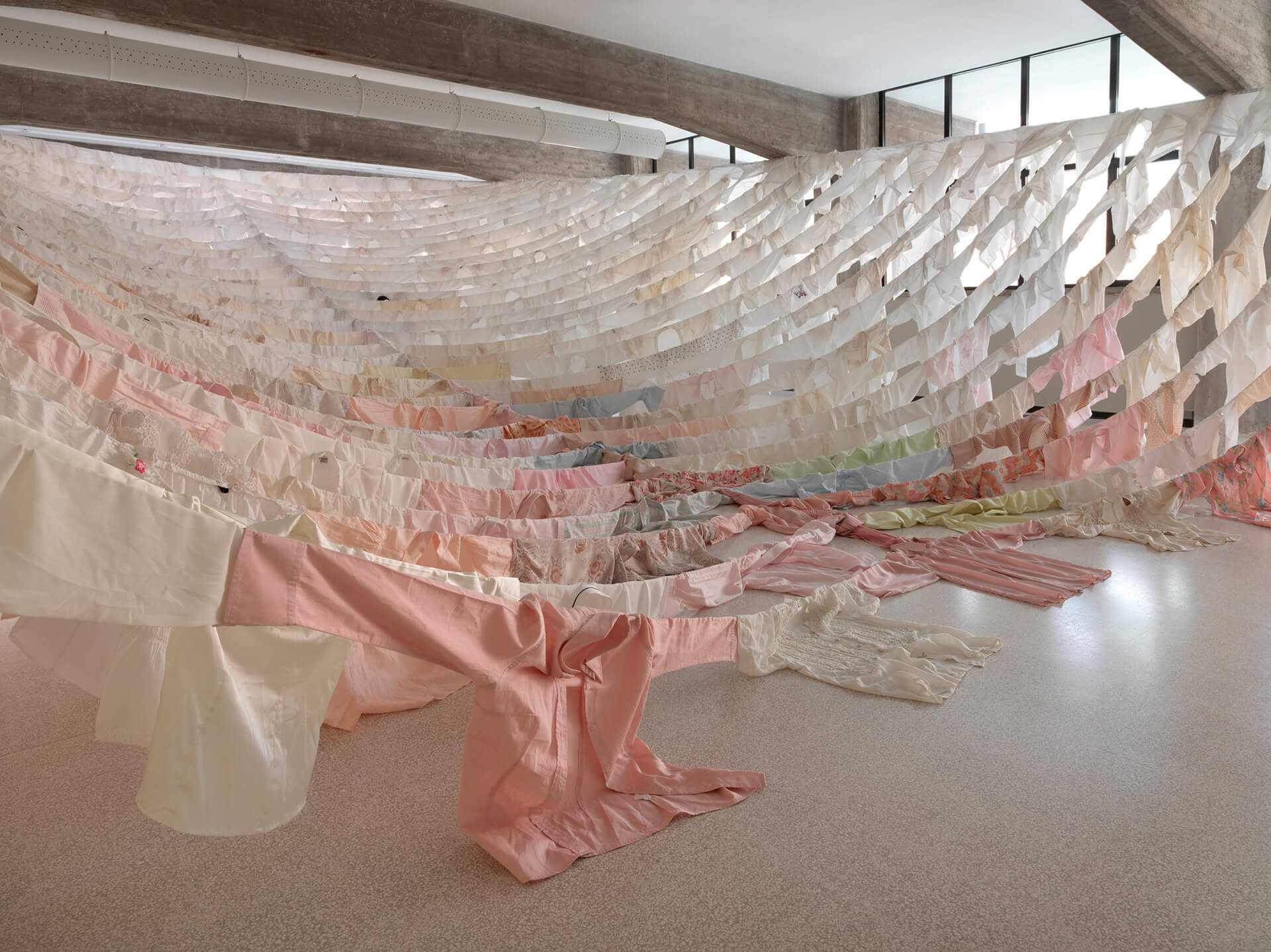Textile-based installations by Kaarina Kaikkonen reimagine the urban architecture
17 January, 2023

A piece of garment is not another object of cloth that holds an immaterial value. Rather the personal attachment it draws has been of significance for many. When the textile is molded to craft - a public art installation for the viewers to absorb it – the distinction between private and communal sphere is diluted. The Finnish installation artist, Kaarina Kaikkonen, is known to reconfigure urban landscapes with her textile installations made out of mostly used clothes. In doing so, Kaikkonen extends an invitation to the viewers to participate in the story, which lies beneath the textures. The resonances these art installations create are stemmed from the textural touch of familiarity and intimacy. Her interest in textiles as a material for the large scale installation evokes the personal tragedy of losing a father the contemporary artist experienced as a child. After losing her father at a formative age, Kaikkonen would embrace herself in his shirts to retain his presence around her.
In an interview with STIR, Kaikkonen informs, “In my art, I often have old used shirts as material. In every old shirt, there has been a warm loving heart inside. I like to think that a
Read More : Kik commits to Pakistan Accord
little bit of this love, and energy, is remaining in the shirt, bringing energy to my art, in another way and form. Even if this is only my fantasy, it does not matter. It is true for me, and it is enough for me. My first large-scale installation - Concession Already Made - created out of jackets similar to my father’s, filling the room, was made already in 1988 at Amer Gallery, Helsinki Finland.” An architect resides in the mind of Kaikkonen who likes to create architectural forms through her art. When she designs new installations in public spaces, it develops into a dialogue between visual art and surrounding urban architecture. The installation Are We Still Going On is conceived specifically for the former factory of Max Mara Fashion Company, now housing the Maramotti Collection. The large installation, evoking the skeleton of a large ship, accompanies the compositional structure of the building from the 50s. The artwork was made of old used shirts that were collected from the local area. In this work female and male shirts are on opposite sides of the boat. They are calmly looking at each other. Every person is important to keep the structure of a boat together. For Kaikkonen the form of a ship made of shirts is a symbol of our life in this society. “It poses a series of questions to us,” mentions Kaikkonen, “How do we people live together? Do we care for each other? Are we supporting and needing each other? Shirts are symbols for people, so each shirt carries memories of unique life and love.”
Höyhen is a memorial sculpture for an Olympic champion in ski jumping where she wanted to express the dream of flying and lightness, using a form of a feather as a metaphor. The shape of feather is made up of several side-by-side ski-like parts. The centre rods of the feather adapt to the curve of the ski jumper and together form a ‘track’. At the top of the track, some skis resemble Nykänen’s first skis and, on the other hand, symbolise the last jump, oriented towards the sky. The direction from the top gives the impression of flying away from this world, towards another dimension. Memorial is in the urban park with a bond. The water in front of the memorial is symbolic of rebirth, and the sky for the dream of freedom. The installation cajoled the viewers to activate their senses to draw meanings of the environment that surrounds them. In doing so, it shed a light on the function of the buildings that carry the visual rhythms – an attribution to material and colour.
Francesca Miglietti, the curator of Kaikkonen’s ongoing show Tied Together at M77 in Milano, Italy, mentions in the press release, “Kaikkonen knows that recreating experiences is remembering, thereby showing the other side of a presence: the clothes contain the presence of the wearer, and her work confronts the viewer with something new yet unfamiliar, but at the same time extremely familiar and intimate.”
In the summer of 2023, Kaikkonen will make two outdoor installations in Italy: Bergamo and Brescia. At both the cultural capitals in 2023, she is invited to make art installations for public spaces together with a small theatre group. The visual artist does not refrain from accepting that consumption of contemporary art is rooted in personal experience, where a context – be it private or public - plays a significant role. “I think that a viewer is also a small artist when interpreting art. We make art together. Art is a dialogue, it has more to say than my little brain can imagine. My art talks back to me also, it teaches me to be a better person, as a human,” elucidates Kaikkonen.
Useful Links:
Source: www.stirworld.com
